Have you ever stood at the edge of a vast wilderness, heart pounding with excitement, yet unsure of how to turn that thrill into a successful big game hunt?
Whether you’re a novice seeking your first trophy or an experienced hunter honing your skills, every successful expedition requires more than just courage and a trusty rifle.
In the world of hunting, preparation is just as crucial as the hunt itself.
Each season, thousands of enthusiasts head into the field, armed with dreams of the majestic animals they hope to encounter.
However, the transition from dreamer to achiever can be riddled with challenges—misjudged terrains, overlooked regulations, and the unpredictable behaviors of wildlife can all thwart your best efforts.
To elevate your big game hunting experience from mere survival to successful strategy, it’s essential to arm yourself with knowledge.
This guide outlines the crucial tips that can make or break your hunt, ensuring you not only return home with a story to tell but also a deep sense of accomplishment.
Ready to take your skills to the next level? Let’s dive into the essentials that will set you on the path to hunting success!
How to Obtain a Hunting License
For those looking to dive into the exciting world of game hunting, obtaining a hunting license is the first critical step.
Individuals born after January 1, 1949, are required to complete hunter education before applying for or purchasing any hunting license.
This education provides a foundation in safe, responsible, and knowledgeable hunting practices.
Upon completion, each hunter is issued a certification card, which must be readily presented while hunting, to ensure adherence to local regulations.
Notably, there are pathways to bypass the traditional hunter education for those over age 50 or for active duty U.S. military members and veterans.
These individuals can opt to test out of the requirement, demonstrating their proficiency and knowledge to obtain their hunter education certificate.
For younger enthusiasts, at least 10 years old (or 12 for big game), an apprentice certificate is available, though it requires mentorship in the field by a licensed hunter.
This apprentice opportunity is limited to twice in a lifetime, fostering a learning environment with experienced guidance.
Hunting licenses and hunter education proof are not mere formalities; they are legal requisites set by state regulations designed to promote sustainable and ethical hunting practices.
It’s essential to take these steps seriously – they’re part of a large network of wildlife management and conservation efforts.
Understanding Limited vs. Over-the-Counter Licenses
When it comes to purchasing hunting licenses, there are two primary types to be aware of: limited licenses and over-the-counter (OTC) licenses.
OTC licenses offer a convenient alternative to the limited license draw process, allowing hunters to purchase these directly, often leading to immediate access to certain hunting opportunities.
OTC licenses are particularly accommodating as they do not mandate the acquisition of a qualifying license beforehand.
Hunters can buy OTC licenses right up until and even during the hunting season, providing considerable flexibility and convenience for last-minute plans or unforeseen hunting trips.
| OTC License Advantages |
|---|
| Immediate access to hunts |
| No qualifying license |
| Purchase anytime |
| Unlimited licenses for some species |
| Detailed information in Big Game brochure |
There is a wide array of species that can be hunted with OTC licenses, including but not limited to elk, white-tailed deer, pronghorn, and certain bear species—with no caps on the number of animals to be hunted.
To gain a thorough understanding of the licenses available and their respective regulations, hunters are encouraged to review the Big Game brochure.
This resource is packed with information that is pivotal to compliant and successful hunting experiences.
The Importance of Preference Points
Navigating the drawing process for limited big-game hunting licenses can be competitive and challenging.
This is where preference points come into play, serving as a helpful system to improve the chances of being drawn in future licensing periods.
A preference point is awarded to an applicant when they do not successfully draw their first-choice limited license in a primary draw.
Applicants can accrue one preference point per species annually if they apply with the appropriate preference-point hunt code or their first choice is not drawn.
This incremental system bolsters the odds of drawing a sought-after license in upcoming seasons, making preference points a strategic aspect of long-term game hunting planning.
It’s crucial to note that these points are only valid within the primary draw application, thereby stressing the importance of participation in this period.
Furthermore, hunters who are not planning to hunt during the current year can still amass preference points by applying for them alone, utilizing the “preference point only” hunt code on their application.
This ensures that they are steadily improving their future draw chances even when not actively hunting.
Below is a concise table summarizing the benefits of preference points:
| Benefit of Preference Points | Description |
|---|---|
| Enhanced Opportunity | Increases likelihood of drawing a license in future seasons. |
| Accumulative Advantage | Collect points each year when not drawn for first-choice license. |
| Strategic Planning | Allows for better planning of game hunting trips over the years. |
| Non-Hunting Year Advantage | Offers an opportunity to garner points even when not actively hunting. |
In summary, preference points serve as a pivotal mechanism in wildlife management, ensuring that hunters have fair opportunities to engage in memorable game hunting experiences.
What’s New for Big Game Hunting
With every new year comes fresh opportunities for big-game hunters, and 2024 is no exception.

The Colorado Big Game Brochure has been unveiled, shedding light on crucial updates and changes that will shape the game hunting seasons.
In the “What’s New” pages of both the big game and sheep and goat brochures, hunters can find comprehensive details on the nuances of limited-license draws and adjustments to the fall hunting seasons.
These pages are indispensable for game hunters seeking to maximize their game hunting adventures.
For those meticulously charting out their hunting itinerary, knowing the kick-off dates for the various game hunting opportunities in Colorado is vital.
One of the most anticipated openings is the archery moose season, commencing at precisely 12:01 am MDT on September 7, 2024.
Following closely are the starting lines for other game animals’ seasons launching on September 14.
A particularly crucial date to mark on the calendar is October 1, 2024, when moose rifle season springs into action, signifying an essential period for those hunters targeting these majestic creatures.
Key Changes to Regulations
At the heart of wildlife management and sustainable hunting practices lie the regulations that ensure responsible hunting.
Notably, anyone born after January 1, 1949, will need to have completed their hunter education and present proof while engaging in game hunting activities.
This ensures that all hunters have the necessary knowledge and skills to hunt safely and ethically.
However, accommodations have been made for particular demographics.
Active duty U.S. military personnel, veterans, and individuals over age 50 have the opportunity to test out of the hunter education requirement, thereby obtaining their certificate more expediently.
Additionally, young enthusiasts, aged 10 and older, are not left out—they can be issued an apprentice certificate that allows them to hunt under the experienced eye of a mentor, with the stipulation of being able to use this waiver only twice in their lifetime.
Amid concerns of chronic wasting disease, Washington State has revised its regulations following the confirmation of its first case in August 2024.
These amendments include mandatory hunter harvest reporting, a crucial aspect of wildlife management that helps ensure the setting of appropriate permit levels for future seasons.
New Species Open for Hunting
When it comes to diversity in game animals, hunters are spoilt for choice. Colorado proudly boasts ten big-game species, each subject to particular guidelines and options, all neatly presented in a detailed booklet.
This includes a spectrum of game from deer to elk, pronghorn, moose, and bear.
On another continent, South Africa stands out as a top-tier big game hunting destination, home to a myriad of species like Greater Kudu, Eland, Impala, and notably, the Cape Buffalo.
This formidable animal is revered as one of Africa’s most challenging and prized dangerous game animals, with fair chase hunts available in prime areas.
In North America, bowhunting whitetail deer is a popular venture, loved for the opportunities it offers and being a favored entry point into bowhunting for many enthusiasts.
To preserve these cherished game experiences, states such as Washington have taken proactive steps to manage game species and prevent diseases.
This includes the implementation of new guidelines like the mandatory harvest reporting and identification tests for certain animals.
Updates on Hunting Seasons and Bag Limits
The eagerly awaited details for the 2024 fall hunting season are now accessible through the Colorado Big Game Brochure.
This pivotal document provides big game hunters with the most current information on limited-license draws and hunting schedules. The season for archery moose opens with dawn at 12:01 am MDT on September 7.
The subsequent muzzleloader seasons for deer, elk, black bear, and moose all initiate on September 14 at 12:01 am MDT, giving hunters using these primitive firearms their chance at a harvest.
Then, the moose rifle season, an opportunity for those wielding modern firearms, starts on October 1 at 12:01 am MDT. Following the moose are the pronghorn hunters, whose rifle season opens on October 5.
Lastly, the regular deer season is set for 23 consecutive days, starting on the third Saturday in November. This period is followed by additional late seasons for bow hunting and muzzleloading, offering numerous chances for those seeking mule deer buck or the agile whitetail deer.
With these updates, hunters can now start planning and applying for their licenses, keeping in mind the hunting outfitters, hunting areas, and season dates for a well-prepared game hunting season.
Staying Informed: Resources for Hunters
To ensure a successful and responsible big-game hunting season, staying well-informed about hunting practices, wildlife movements, and access is crucial.
To facilitate this, Colorado Parks and Wildlife (CPW) has released a comprehensive video series that addresses frequently asked questions.
These videos, more than 120 in total, are available on YouTube and provide valuable insights tailored to specific Game Management Units (GMUs)—the very areas where hunters apply for their licenses.
Additionally, nonprofit organizations in Colorado can access special Auction and Raffle Program big game licenses provided by CPW, with proceeds earmarked for wildlife conservation efforts, including habitat enhancement and educational projects.
These programs reflect a commitment to sustainable game hunting and the preservation of Colorado’s rich wildlife heritage.
It is also essential for hunters to understand the various permit and stamp requirements detailed in Colorado’s regulations.
These outline the necessary documentation needed to legally hunt different species within the state. By adhering to these regulations, hunters contribute to the responsible stewardship of Colorado’s game animals.
Moreover, participating in hunting forums and communities can prove incredibly beneficial.
These platforms offer hunters up-to-date information, regulations updates, access opportunities, and seasoned tips, making them invaluable assets for both novice and experienced hunters alike.
Accessing State Regulations Online
In today’s digital age, hunters have the advantage of accessing myriad online resources facilitated by state wildlife agencies. These resources often include up-to-date hunting regulations, guidebooks, and interactive maps delineating GMUs, all designed to assist hunters in complying with state laws.
The convenience of online platforms also extends to harvest reporting—integral for wildlife management and the determination of future permit levels.
Accessing accurate information on state regulations for big-game hunting is now more convenient than ever, thanks to digital platforms provided by state wildlife agencies.
These rich online resources are pivotal for hunters seeking to stay compliant with the legalities surrounding game animals and hunting seasons.
Here is what hunters can typically find online:
- Hunting Regulations & Guidebooks: These documents detail the rules for hunting on public and private lands, specifying season dates, game hunting opportunities, and bag limits.
- Harvest Reporting Platforms: Hunters are often required to report their harvests, which is a systematic way for wildlife management agencies to track game populations and adjust future hunting license allocations.
- Game Management Unit Maps: These essential tools delineate specific hunting areas, illustrating where hunters can pursue game animals such as whitetail deer, black bears, or mountain goats during the regular season or bow season.
- Mandatory Harvest Reporting Rules: Understanding these state rules is critical for hunters to contribute to informed management practices and help set the stage for upcoming seasons.
- Hunter Education Courses: These are available to aspiring hunters seeking to complete their hunter education requirements. Online courses often come with virtual lessons coupled with mandatory in-person field days.
By utilizing these digital resources, hunters can plan their game hunting adventures with ease, ensuring they have up-to-date information on licenses, outfitters, and hunting season schedules.
Following Hunting Forums and Communities
For those seeking camaraderie and collective wisdom, hunting forums, and communities provide an invaluable space for discussion and sharing.
The Big Game Hunting Podcast, for example, discusses a range of topics from hunting locales to gear recommendations. Spotlighted in outdoor publications, the Big Game Hunting Blog asserts its relevance and authority within the hunting community, offering insights tailored to various hunting scenarios.
These communities often help hunters customize their gear and approach, focusing on specific hunting situations and offering advice for selecting appropriate cartridges.
They also serve as platforms to plan and discuss hunting adventures, granting hunters access to high-quality expeditions across prime hunting lands.
Importantly, these forums often stress ethical hunting and wildlife conservation, resonating with organizations such as the Boone and Crockett Club, which underscores the importance of these values in modern game hunting experiences.
Utilizing Colorado Hunting Brochures
Colorado’s rich wildlife offers a diverse array of game hunting adventures, with a spectrum of game animals such as mule deer buck, bighorn sheep, and Rocky Mountain elk gracing its sprawling public and private lands.
Utilizing Colorado hunting brochures is vital for any game hunter looking to navigate the hunting seasons, season dates, and unique opportunities specific to each Game Management Unit (GMU).
In Colorado, hunters are presented with methods such as archery, muzzleloader, and rifle for their game hunting experiences.
Associated methods dictate the legal firearms allowed, from shotguns to muzzleloaders, ensuring the hunter adheres to the caliber requirements for their chosen game.
Annually, a limited number of hunting licenses for various GMUs are issued, making early planning essential. Hunters can enter big game draws, a chance to acquire the sought-after permits.
Post-draw, remaining limited licenses are up for purchase, a boon for those who missed initial success.
Hunting brochures in Colorado not only provide crucial information on hunting licenses but also detail the specifications for season dates and the regular and upcoming seasons for multiple species.
These brochures are instrumental in planning a successful game hunting season, aligning hunter education, and participating in the state’s wildlife management efforts.
Exploring Big Game Species
Big game species in North America present an array of challenges for hunters.
Each species exhibits its own level of wariness, adaptability, and intelligence, sparking discussions among game hunters about the varying difficulty levels in pursuing them.
The complexity of hunting these big-game animals often depends on individual experiences, with different hunters encountering unique challenges and degrees of success, even when hunting the same species.
Historically, big game hunting showcased early human ingenuity and group coordination, as primitive tools and collective tactics were employed to outsmart these animals.
The pursuit of big game surged in popularity during the Victorian era and reached its zenith in the 20th century, with many iconic hunters of the time also advocating for conservation efforts.
Today, big game hunting practices include modern conservation measures. In certain regions, hunters undergo mandatory testing for Chronic Wasting Disease (CWD) to track and manage the health and population dynamics of wildlife.
These measures underscore the evolving relationship between hunter, game, and environment.
Pronghorn: Tips and Techniques
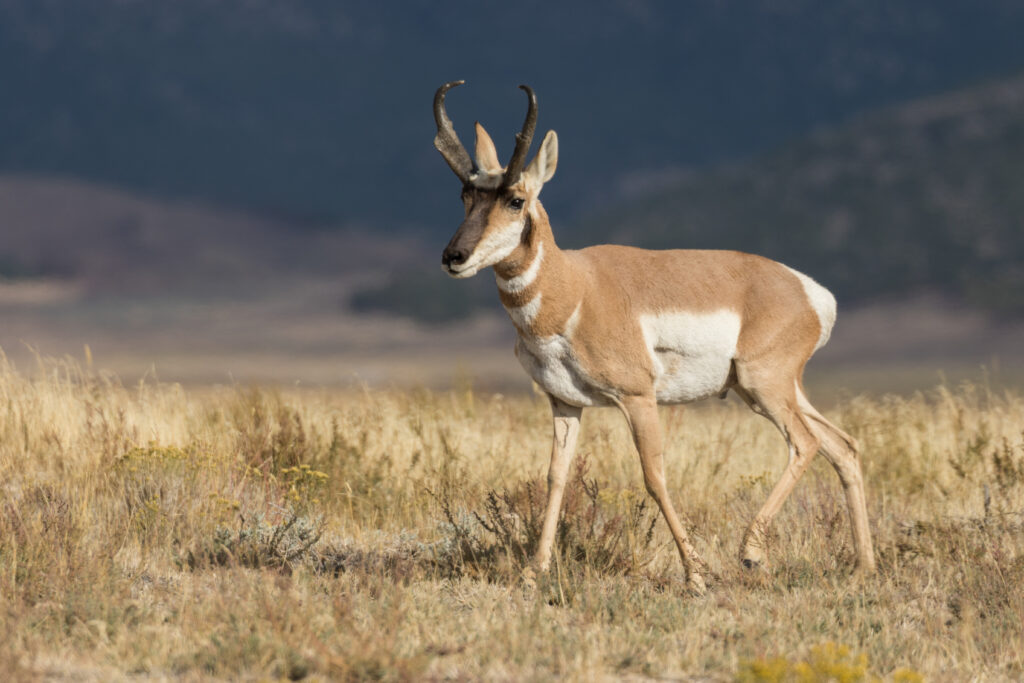
Pronghorn, lauded as North America’s fastest land mammal, offer one of the most challenging game experiences. Nebraska, recognized for its pronghorn opportunities, allocates hunting zones through annual draws or leftover tags.
The pronghorn’s speed and agility are key factors hunters must account for in their pursuit strategies.
Nebraska’s pronghorn hunting is accessible both on public and private lands, catering to hunters’ various preferences and rights of access.
Depending on their budget and desired level of guidance, hunters can opt for guided pronghorn hunts ranging from $1,000 to $3,000.
Such hunts can provide invaluable local knowledge and enhanced opportunities for those pursuing this swift big game animal.
Hunting Mountain Goats: Challenges and Strategies
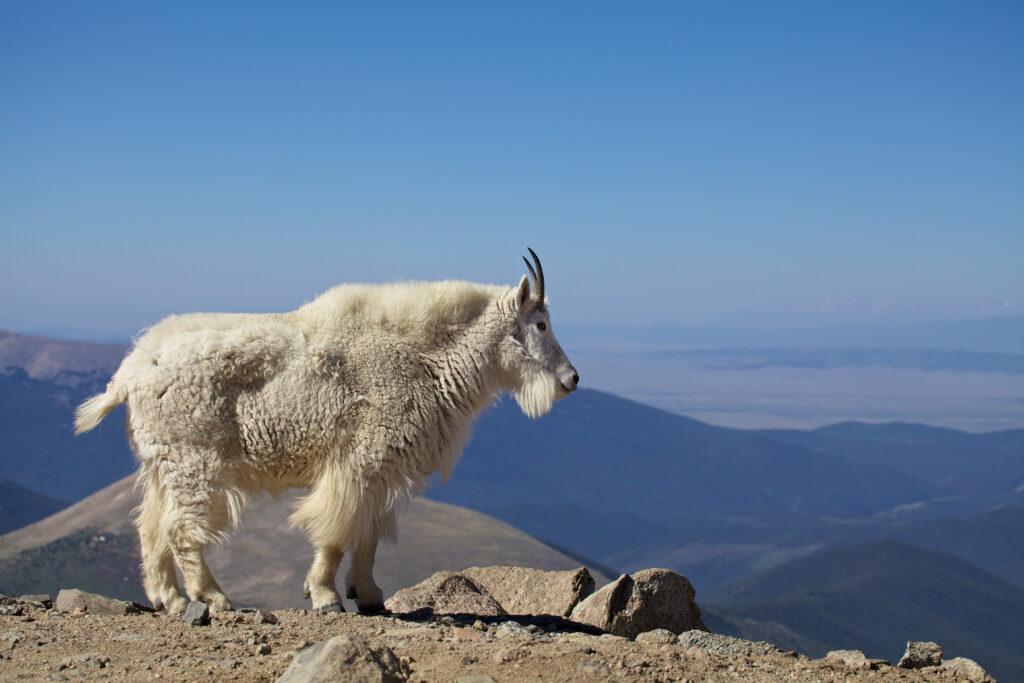
Pursuing the elusive mountain goat in Colorado demands persistence from hunters who must navigate rugged terrains and adapt to varied environments.
Being informed about season dates and local regulations is crucial, as these factors can dictate hunting strategies.
The trophy units for mountain goats may have longer odds for drawing tags, prompting hunters to meticulously plan ahead for these coveted opportunities.
Given that these areas may require careful attention to regulation changes and disease management efforts, including those targeting chronic wasting disease, preparation goes beyond physical readiness and incorporates in-depth knowledge of the hunting grounds and the game’s health considerations.
Opportunities for Mountain Lion Hunting
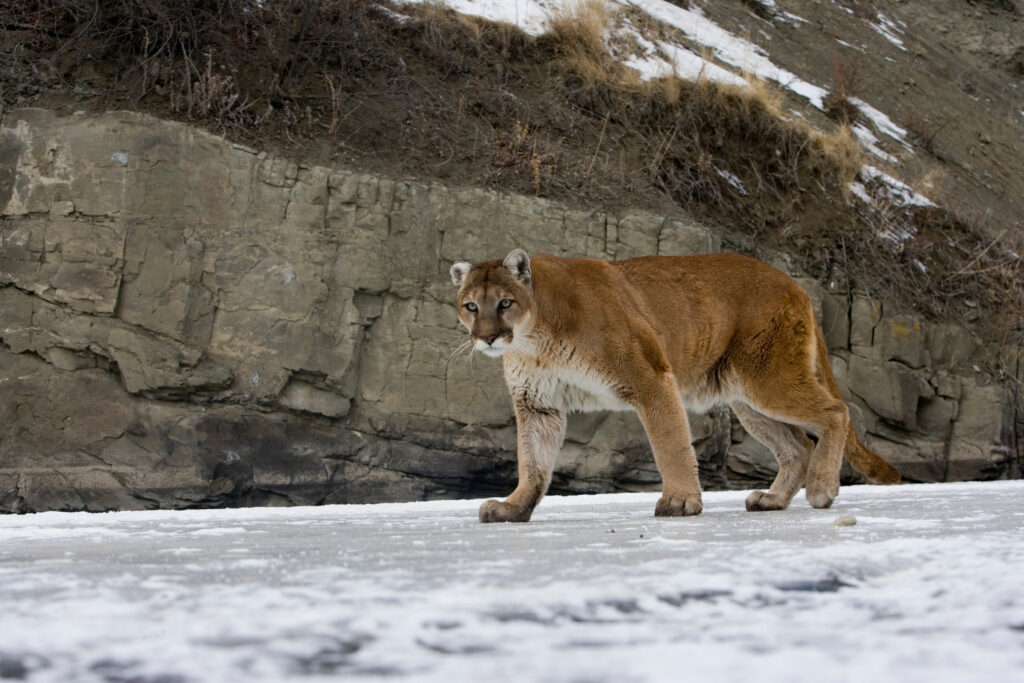
For those drawn to the pursuit of mountain lions, both Colorado and Idaho stand out with robust populations of this big game predator.
Hunting mountain lions with hounds is a thrilling and challenging experience available in these states, where the distinct sound of dogs on a hot track signals the start of an electrifying hunt.
Colorado takes hunter education seriously, mandating a free online course before issuing hunting licenses for mountain lions. Optimal hunting times in these states are late winter when tracks stand out against fresh snowfall.
With over-the-counter licenses readily available, hunters benefit from the flexibility to plan their mountain lion adventures, epitomizing the thrilling big game hunting opportunities these regions offer.
Planning Your Hunting Trip
When embarking on a big game hunting trip, particularly in places like Canada, thorough preparation is paramount.
Not only does one need a moose tag to hunt for such an iconic game animal in regions like Alberta, but being equipped with the appropriate paperwork for firearms is essential too.
Another vital component is obtaining a Wildlife Identification Number (WIN) card, which is required to track and manage game hunting activities.
Big Game Hunting Adventures is one company that simplifies this process by offering diverse hunting locations across the globe, including the game-rich territories of South Africa and Canada.
With access to hundreds of thousands of acres of prime hunting land, they cater to the varying experience levels of hunters, ensuring an exceptional outdoor pursuit for everyone.
While participating in organized hunts, anticipate an investment, as moose hunts in Alberta can typically cost between $5,000 to $7,000.
However, value is a key consideration for many top-ranked hunting trips, marrying affordability with accessibility for the average hunter.
Before setting out, it is critical to familiarize oneself with local hunting regulations, season dates, and required licenses to both comply with laws and optimize the hunting experience.
Budgeting for Your Adventure
The two primary constraints faced when planning a hunting adventure are time and money.
In California alone, the economic impact of big-game hunting was a staggering $263,702,757 in 2016. Wyoming wasn’t far behind, with an estimated economic impact of $224 million from big-game hunting in 2015.
The financial infusion hunting provides is reflected in the conservation success stories such as the white-tailed deer in the U.S., which has seen its population skyrocket from about 500,000 in the early 1900s to 30 million today.
Numerous studies support the high economic benefits derived from effectively managed big-game hunting.
Finding Affordable Hunting Trips Across North America
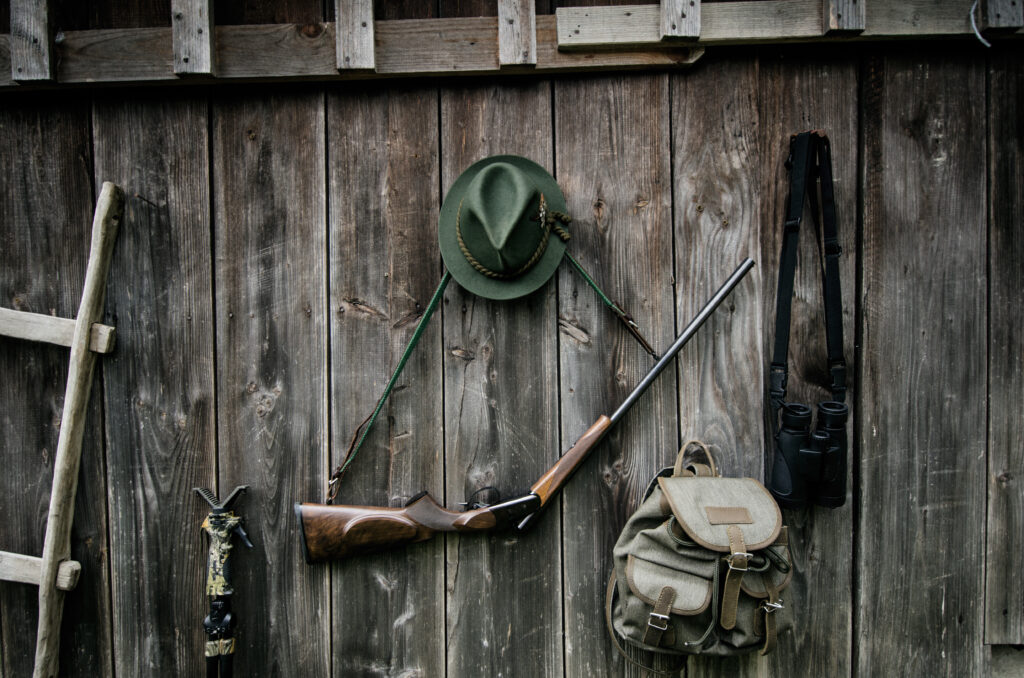
Canada’s hunting outfitters offer experiences ranging from $4,000 to $5,000 for game such as giant boars and trophy-class black bears.
These regions are known for their rich hunting genetics. Enormous bull moose and massive bears are the hallmarks of Alberta’s trophy hunting environment.
The Cassiar Mountains of British Columbia present exclusive hunting opportunities for Mountain Caribou and Mountain Goat, with the region touting North America’s size and quality of these game animals.
However, logistics can play a part in the cost, as reaching destinations like Kodiak Island, Alaska may involve hiring small planes and boats, which can affect the overall budget.
Understanding Travel and Accommodation Options
Remote areas like northern Saskatchewan can only be accessed via specialized transportation, such as boats or planes.
Blacktail deer hunts in Alaska often make use of boats for both shelter and traversing the hunting territory, providing unique access while ensuring protection against wildlife.
South Africa’s hunting farms offer a spectrum of accommodations, from the luxurious to more simple setups, catering to groups and families alike.
They aim to enhance the overall hunting experience by providing comfortable stays after a long day in the wild.
In locations like Namibia and South Africa, trophy hunting’s exclusivity is heightened by the remoteness. Access to such areas typically requires significant travel arrangements, influencing not only plans but also the budget.
Guided hunts in the Cassiar Mountains open up vast territories for hunters and increase the likelihood of encountering substantial game due to the expansive and unfrequented hunting grounds.
These considerations clearly demonstrate the intricacies involved in planning your big game hunting trip.
By navigating the right channels for permits and licenses, understanding the economic impacts, and assessing the variety of available trips, you can ensure a well-planned and budget-friendly outdoor adventure.
Ethical Hunting Practices
Ethical hunting practices underpin every responsible game hunter’s approach to pursuing quarry in the wild. It is anchored by the concept of fair chase, which is the ethical sportsmanlike and lawful pursuit of game.
This concept includes not having an unfair advantage over game animals, thus maintaining a balance between the hunter and the hunted.
Organizations like the Boone and Crockett Club and the Pope and Young Club are at the forefront of advocating these principles, promoting fair play, respect for the environment, and the use of legal methods during the hunt.
With hunting contingents growing and game areas often facing pressure from human encroachment, ethical practices have become increasingly paramount.
They not only ensure the sound management of game animal populations but also the conservation of habitats and biodiversity.
Philosopher José Ortega y Gasset, in his seminal work, Meditations on Hunting, places the responsibility squarely on the hunter to seek a deeper connection and understanding with the natural world and to approach the hunt with due contemplation and respect.
Moreover, ethical hunting practices contribute to the wider conservation effort.
Legal, well-regulated sport hunting supports vital conservation work by providing the necessary financial resources to fund wildlife and habitat protection initiatives. These initiatives directly benefit the long-term preservation of species and ecosystems.
In many instances, the funds raised from hunting licenses and fees go towards wildlife management programs, anti-poaching efforts, and community education, all of which help sustain the wildlife populations thus providing game hunting opportunities for future generations.
Through a strict adherence to ethical behavior, hunters not only engage with nature in a responsible and sustainable manner but also ensure that hunting remains a respected tradition that honors the spirit of the sport and the majesty of the natural world.
The Importance of Respecting Wildlife
Respecting wildlife is a moral obligation and a crucial element of ethical hunting practices. It underpins the relationship that develops between hunters and the ecosystems they engage with.
Adhering to practices such as the principle of fair chase fosters a reverential balance where the game animal is given a reasonable chance to evade the hunter, thereby ensuring maintained species populations.
Scientific management, underpinning well-regulated hunting, determines quotas and enforces season dates that help protect certain game animals during critical times in their life cycles, such as breeding seasons.
Hunters often describe a deepening of understanding and appreciation for nature through their game hunting experiences.
They come to see wildlife not simply as targets but as vital components of the natural world with intrinsic value. This development of respect is crucial for the sustainable engagement with wildlife and its habitats.
The economic aspect of hunting is another angle from which respect for wildlife is demonstrated.
Revenue streams generated from ethical sport hunting—via licenses, hunting outfitters, and tourism—provide powerful financial incentives for conservation efforts in regions such as the Rocky Mountain states and South Africa.
These activities can effectively transform wildlife into a renewable resource that, if managed responsibly, benefits both humans and the animal populations themselves.
Personal investment in natural ecosystems through hunting activities may also lead individuals to support conservation initiatives more actively, reinforcing their role in the protection and perpetuation of wildlife instead of merely spectating.
The respectful hunter thus becomes not only an enthusiast of the sport but also a guardian of the wilderness.
Techniques for Sustainable Hunting
Sustainable hunting techniques are integral to ensuring the long-term health of wildlife populations and their habitats. Ethical hunting is not about the guarantee of success but rather about balance—allowing for the population growth of various game animals while also providing hunters with occasional success stories.
Hunters must adhere to rules that govern sustainable kills, avoiding overharvesting and only taking what they can use. This approach mirrors the natural predator-prey relationships found in the wild and helps to keep ecosystems balanced.
The conservation value inherent in big-game hunting is tremendous. By following ethical practices, hunters support the preservation of wildlife habitats and the broader issue of biodiversity.
This involves adhering to hunting seasons, bag limits, and investing in hunter education to ensure that hunters are skilled, knowledgeable, and more likely to make a clean kill, thereby minimizing animal suffering.
Organizations such as the Boone and Crockett Club and the Pope and Young Club emphasize such practices through their scoring systems for game animals, which reward hunters for ethical hunting and wildlife conservation.
Consuming what one kills also reflects responsible stewardship, ensuring natural resources are valued and not wasted.
Beyond the act of hunting, there is an opportunity for personal connection with the environment and a heightened awareness of conservation needs.
When practices are carried out ethically, hunting acts as a bridge between humans and nature, enabling hunters to become stewards of the land they hunt on and advocates for the wildlife that inhabits it.
This deep-seated connection underlines the importance of maintaining the natural world for both current and future generations.
Handling Game Responsibly
Handling the game responsibly is crucial to ethical big-game hunting and wildlife conservation. This includes staying up-to-date and compliant with regard to hunting season dates, license requirements, and bag limits.
Each game animal—whether it is a mule deer buck, a mountain goat, or a bighorn sheep—has specific season dates that are set based on various factors, including the species’ breeding periods, population status, and ecological considerations.
For example, here is a summary table of hunting season dates for select game animals:
| Game Animal | Archery Season | Muzzleloader Season | Rifle Season |
|---|---|---|---|
| Moose | Sep. 10 – Oct. 14 | Oct. 15 – Oct. 25 | Oct. 26 – Nov. 15 |
| Whitetail Deer | Sep. 1 – Nov. 15 | Dec. 1 – Dec. 14 | Nov. 16 – Dec. 31 |
| Elk | Aug. 30 – Sep. 30 | Oct. 1 – Oct. 14 | Oct. 15 – Nov. 18 |
| Black Bear | Sep. 1 – Oct. 15 | No specific season | Oct. 16 – Dec. 31 |
(Note: These dates are fictional and for illustrative purposes only. Hunters must verify the actual season dates with the relevant wildlife management authorities.)
Hunters must plan their activities in accordance with these regulations to promote the conservation of game populations.
Bow season, muzzleloader season, and rifle season each have different opening and closing dates that must be respected.
Staying educated about season dates, which may vary by region, helps hunters participate in a sustainable and legally sanctioned way.
Timely application for the necessary hunting licenses and understanding local hunting regulations are also part of responsible game management.
Keeping a calendar of hunting dates, being aware of any changes to legislation, and participating in hunter education courses can help hunters fulfill their roles as conservationists.
In this way, each game hunter contributes to the well-being of wildlife populations and the ongoing enjoyment of responsible hunting for all.
Economic Impact of Big Game Hunting
The allure of big game hunting extends beyond the thrill of the chase and game experiences; it has measurable economic ramifications for regions where hunting is a significant activity.
In California, the total economic impact attributed to big game hunting was estimated to be a staggering $263,702,757 in 2016. This figure illuminates the vital role that hunting enthusiasts and the industry play in the Golden State’s economy.
Similarly, the rugged terrains of Wyoming recorded an estimated economic impact of $224 million from big-game hunting for the year 2015, signifying a substantial financial injection into the state’s coffers.
Globally, the example of the Bubye Valley Conservancy in Zimbabwe underlines big-game hunting’s dual prerogative — economic sustainability alongside environmental conservation.
This conservancy showcases how collected hunting fees can be channeled successfully into managing lion and rhinoceros populations, thus preserving these species for the future while also supporting the local economy.
The narrative that echoes through these facts is consistent: when properly regulated and managed, big-game hunting presents a notable opportunity for economic contributions, with multiple studies affirming that well-managed big-game hunting can catalyze considerable positive economic effects for various regions.
Supporting Conservation Efforts Through Hunting
In contrast to common misconceptions, big game hunting, when practiced sustainably, stands as a pragmatic approach to wildlife conservation.
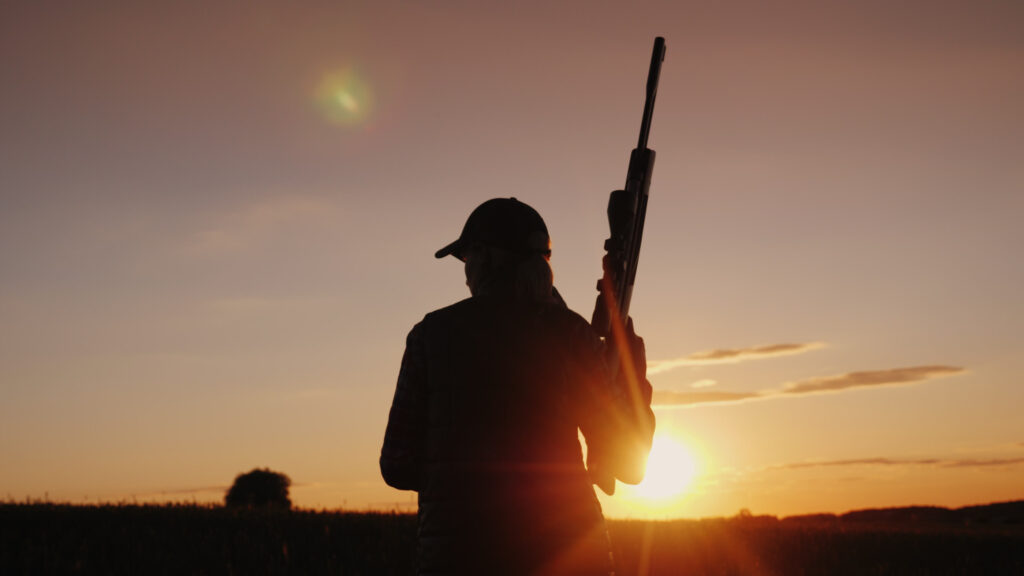
The success stories of hunting operators who prioritize ecological balance directly translate to heightened levels of protection and management of wildlife populations and their habitats.
A token of this success is visible with species such as Tahr and Chamois in New Zealand, where controlled and responsible hunting helps to retain healthy population sizes, mitigating the potential adverse effects of overpopulation on the environment.
Hunting outfitters emphasizing sustainability are not merely providing game hunting adventures; they are the custodians of our planet’s ecosystems. Such practices ensure that game hunter experiences are aligned with the natural ebb and flow of wildlife cycles.
The by-product of these endeavors is an increase in public awareness and engagement with wildlife management issues, creating a community invested in the stewardship of nature’s bounty.
In summary, the model of big game hunting, when embedded with strategic conservation protocols and economic insight, supports the very existence of the wildlife it reveres, proving that with a responsible and informed approach, hunting can be an integral component of conservation efforts worldwide.
Essential Tools for Big Game Hunting
Big game hunting encompasses the pursuit of large game animals, which may be prized for their size, strength, rarity, or a combination of these attributes.
Historically, such hunting has roots dating back to prehistoric eras, as evidenced by ancient artifacts like the Schöningen spears, and it has been essential for human survival for hundreds of thousands of years.
In the modern context, big game hunting has evolved into a more regulated and structured activity with a significant emphasis on conservation and sustainable practice.
The term ‘big game’ frequently brings to mind the iconic species of Africa, often referred to as the Big Five: lions, African elephants, rhinoceroses, cape buffalo, and African leopards.
Additionally, the pursuit of game is not limited to Africa; many other regions around the globe, including Canada, the United States (notably the Rocky Mountain and Alaskan regions for species like bears and Mountain Lions), and New Zealand offer a plethora of big game hunting adventures across diverse environments, featuring animals such as moose, mountain goats, Bighorn Sheep, and both mule deer and whitetail deer.
The tools required for big game hunting have evolved alongside the practice.
From primitive stone tools used by our forebearers, the modern hunter has access to a sophisticated array of equipment designed to optimize the hunting experience on either public or private lands.
Successful big-game hunters are equipped not just with knowledge and skills, but also with the appropriate gear and weaponry to ensure a safe and ethical hunt.
Choosing the Right Firearm or Bow
When engaging in big game hunting, selecting the right firearm or bow is crucial.
The decision is a matter of personal preference, but also one of practicality and adherence to game regulations, which often stipulate authorized equipment for specific games during various hunting seasons.
Firearms such as rifles and shotguns are common choices, with popular calibers including the venerable .30-30 Winchester, the versatile .308 Winchester, and the powerful .30-06 Springfield.
These firearms have consistently proven effective for taking down large game when paired with the correct ammunition.
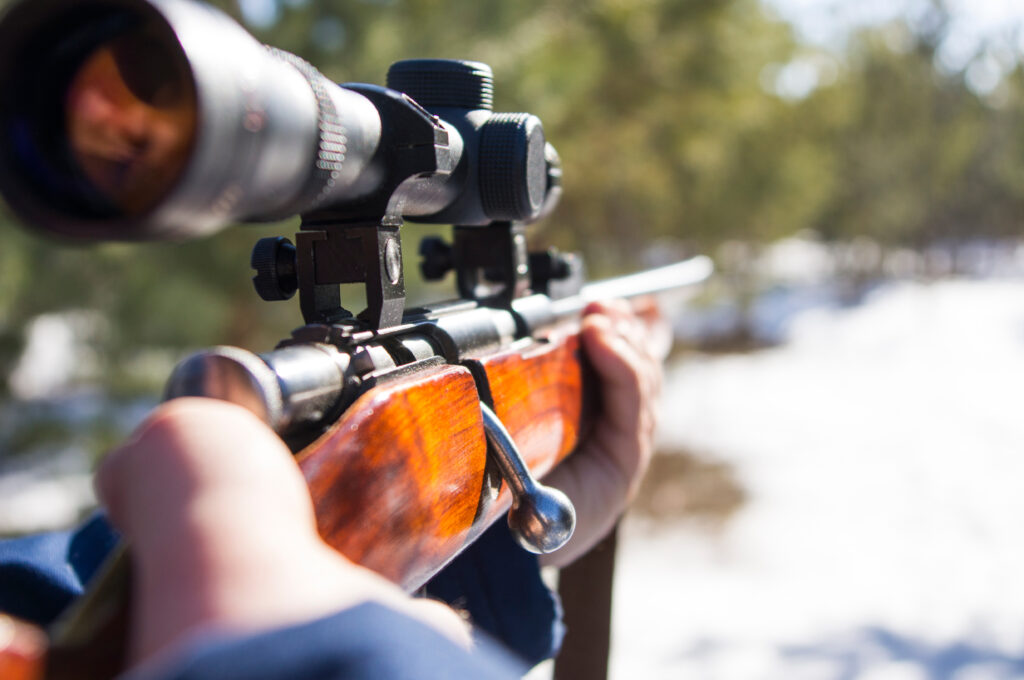
Bows, on the other hand, present traditional archery methods involving less noise and a more intimate hunting experience.
Longbows, recurve bows, compound bows, and crossbows each offer distinctive advantages and challenges, and are crafted from modern materials such as fiberglass, carbon fiber, and advanced alloys for increased durability and performance.

When selecting arrows, considerations include the material (wood, fiberglass, or carbon fiber) and the arrowhead type, which should be matched to the specific game pursued.
Variables such as bullet or arrowhead weight, shape, and flight characteristics are critical; they can greatly impact the effectiveness of a shot in a real-world hunting scenario.
For those seeking an even more primal experience, the use of spears or atlatls (spear-throwers) represents a return to ancient hunting techniques that require considerable skill and practice to master.
These methods offer an unconventional and rewarding challenge for hunters desiring a more elemental connection with the act of hunting.
Whether you choose the precision of modern firearms, the tradition of the bow, or the ancestral draw of the spear, the tools you select are extensions of the hunting ethos.
Honed by thousands of years of human innovation, these tools not only aid in harvesting game but also play a part in the intricate dance of wildlife management and conservation.
Conclusion
Big game hunting is not merely a test of skill or a pursuit of trophies; it is interwoven with a deeper understanding of wildlife conservation and ethical practices.
As you prepare for your next adventure, remember that the tools you choose, whether they be rifles, bows, or even traditional spears, should reflect not only your personal preferences but also your commitment to responsible hunting.
Make informed choices about your equipment, seek to understand the ecosystems you engage with, and respect the regulations that safeguard wildlife populations.
By prioritizing ethics and sustainability in your hunting practice, you contribute to the preservation of wildlife for future generations, ensuring that big game hunting remains a valued tradition.
Ultimately, each hunt is an opportunity to connect with nature, gain a greater appreciation for biodiversity, and reinforce the importance of conservation efforts.
As you venture into the wild, carry with you the knowledge that every responsible decision matters and that the true measure of success is found not only in the hunt itself but in the lasting legacy of stewardship you leave behind. Happy hunting!

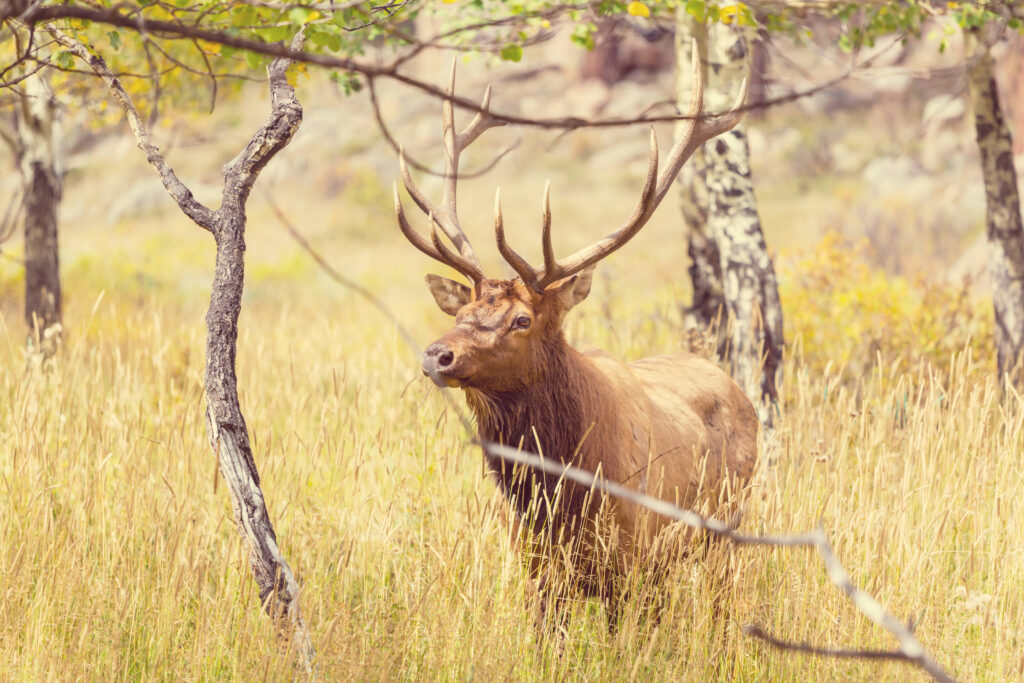
1 thought on “Big Game Hunting 101: Essential Tips for a Successful Hunt”